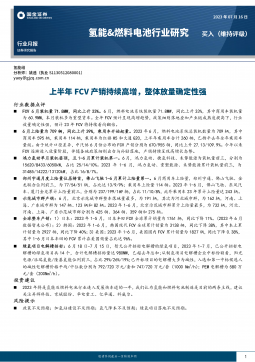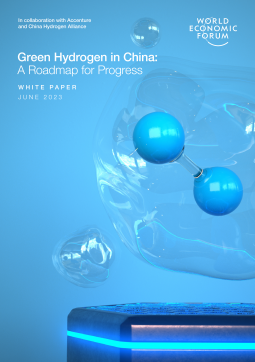国际能源署(IEA):清洁能源的未来报告:氢专利【英文版】  VIP专免
VIP专免
HydrogenpatentsforacleanenergyfutureAglobaltrendanalysisofinnovationalonghydrogenvaluechainsJanuary2023HYDROGENPATENTSFORACLEANENERGYFUTUREepo.org|02ForewordFacedwithaconvergenceofcrisesspanningenergy,geopoliticsandtheenvironment,thefutureoftheEuropeaneconomynowdependsmorethananytimeinitshistoryonit...
评论(0)
相关推荐
-
2030光分储能源转型白皮书(全球视角)VIP专免

 2023-07-19 154
2023-07-19 154 -
千际投行:2023年第三方支付行业研究报告VIP专免

 2023-06-20 120
2023-06-20 120 -
锐仕方达:2023年医药行业薪酬白皮书VIP专免

 2023-06-20 134
2023-06-20 134 -
行行查:2023年中国IGBT行业研究报告VIP专免

 2023-06-20 49
2023-06-20 49 -
F5:2023年应用策略现状报告VIP专免

 2023-06-20 60
2023-06-20 60 -
58安居客研究院:2023年青年置业报告VIP专免

 2023-06-20 76
2023-06-20 76 -
蝉妈妈:2023抖音电商家具建材行业报告VIP专免

 2023-06-20 61
2023-06-20 61 -
嘉世咨询:2022卫浴五金行业简析报告VIP专免

 2023-06-20 43
2023-06-20 43 -
行行查:2023年中国种子行业研究报告VIP专免

 2023-06-20 39
2023-06-20 39 -
易点天下:2023中国新能源品牌出海行业观察VIP专免

 2023-06-20 36
2023-06-20 36
作者详情
相关文档
-

氢能&燃料电池行业研究:上半年FCV产销持续高增,整体放量确定性强
分类:节能环保
时间:2023-07-28
标签:无
格式:pdf
价格:10 数查币
-

氢能:工业绿氢加速落地,成本下行路径明确
分类:节能环保
时间:2023-07-24
标签:无
格式:pdf
价格:10 数查币
-

中国绿氢发展路线图Green+Hydrogen+in+China:A+Roadmap+for+Progress
分类:节能环保
时间:2023-07-19
标签:无
格式:pdf
价格:10 数查币
-

中国石油石化:石化央企布局氢产业链,国内首个万吨级绿氢炼化项目全产业链贯通
分类:节能环保
时间:2023-07-12
标签:无
格式:pdf
价格:8 数查币
-

头豹:氢燃料电池汽车 头豹词条报告系列
分类:节能环保
时间:2023-07-12
标签:无
格式:pdf
价格:8 数查币









请登录,再发表你的看法
登录/注册